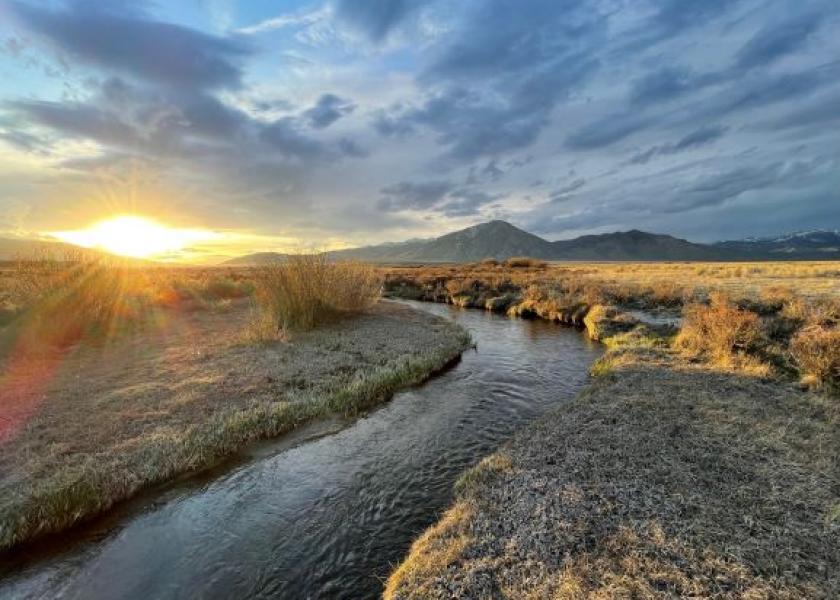What's in it for Ag in the New Spending Bill?

The House on Friday averted a government shutdown by voting 225 to 201 in favor of the Consolidated Appropriations Act of 2023. The $1.7 trillion omnibus bill includes 12 separate bills that cover everything from natural disasters to military pay to foreign aid.
Sanford Bishop Jr., ag, rural development and food and drug administration subcommittee chairman, says the bill is "crucial" to America's economic success.
“These federal programs make our country a world leader in agriculture, ensure that we have safe, abundant food and medicine to lead healthy lives, support America’s farmers and ranchers, and provide Americans with the materials that clothe us and build our communities," Bishop says.
Here are highlights of the key ag-sector funding from the omnibus:
Insurance
• Directs USDA to index all administrative and operating expense in the crop insurance program for inflation.
Research
• Agricultural research: Ag research funding will increase by $175 million to $3.45 billion in 2023, including monies for Agricultural Research Service, National Institute of Food and Agriculture, Agriculture and Food Research Initiative, and Sustainable Agriculture Research and Education program.
Conservation
• Includes the SUSTAINS Act, which allows corporations and other private entities to contribute funding for conservation projects and authorize USDA to match the donations.
• Reauthorizes the Pesticide Registration Improvement Act, which imposes fees for maintenance and registration of active ingredients. It boosts registration and maintenance fees 30% and allows EPA to raise fees by 5% in 2024 and 2026.
Infrastructure
• $1.48 billion is included on top of annual appropriations funding for the Army Corps of Engineers to make emergency repairs and navigation improvements needed after extreme weather events, including low water on the Mississippi River.
"One of the best returns on investment is when we pump money into our infrastructure, especially the great waterway system," Jim Wiesemeyer, ProFarmer policy analyst told AgriTalk Host Chip Flory. "This town [Washington, D.C.] has had a mindset change on pumping more money, not only in the new projects, but restoring some of the water transportation endeavors of the past. It's good news."
Relief Aid
• $3.7 billion in farm disaster aid, to cover eligible 2022 crop and livestock losses, with $494.5 million to be used for livestock losses due to drought or wildfires, as part of overall $40.6 billion for disasters.
• Requires USDA to make a one-time payment to each rice producer on a U.S. farm in the 2022 crop year. USDA will determine payment rates based on yield history and acreage.
• Authorizes $100 million for the USDA to make pandemic assistance payments to cotton merchandisers that purchased cotton from a U.S. producer from March 1, 2020, through the measure’s enactment date.
• $25 million for specialty crop equitable relief.
Broadband
• USDA's ReConnect loan and grant program for rural broadband will get $348 million for fiscal 2023.
Food Assistance
• Make permanent a summer EBT (food stamp) program to provide up to $40 a month per child. It allows grab-and-go or home delivery of meals to kids in rural areas as an alternative to meals in group settings Any summer meals benefits issued to a household in the summer of 2023 couldn’t exceed $120 per child. USDA will be required to establish a program beginning in the summer of 2024 and annually thereafter to issue EBT benefits to eligible households to ensure continued access to food when school isn’t in session in the summer.
• Aid for Food for Peace ($1.8 billion) and McGovern-Dole International Food for Education ($248 million) programs.
Carbon
• Includes the Growing Climate Solutions Act, which authorizes USDA to oversee the registration of farm technical advisers and carbon-credit verification services
Wiesemeyer says the swift passage of the spending package signals the coming farm bill might be easier to pass than some had previously thought, despite the new congress moving in next week.
"Congress put more than a few dollars in this for farm bill-related topics, especially food stamps and some of the climate change funding," he says. "I think this really increases the odds that both the Senate and the house should get a new farm bill done in 2023."
The bill will now move to President Biden's desk, where he is expected to sign it this week.
More on policy:
4 Ways to Advocate for Ag in the New Farm Bill
U.S. Defense Spending Bill Leads to China Taking Aim at Taiwan







